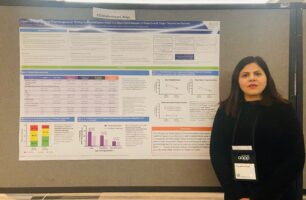How Clinicians Can Help Support Their Patients Who Are Being Bullied

Acts of bullying can cause feelings of fear, loneliness and sadness, as well as depression and anxiety in victims. A 2023 meta-analysis published in BMC Psychiatry confirmed that depression in children and adolescents was significantly associated with being bullied, bullying, and bullying-bullied behavior. “Results of the meta-analysis showed that the risk of depression in children and adolescents who were bullied was 2.77 times higher than that of those who were not bullied; the risk of depression in bullying individuals was 1.73 times higher than that in nonbullying individuals; and the risk of depression in individuals who bullied and experienced bullying was 3.19 times higher than that in nonbullying-bullied individuals.”
At first, it might be difficult for others to know what’s wrong with a child or teenager who’s being bullied. Children often don’t want to talk about bullying out of fear of embarrassment, rejection, being seen as weak, or other reasons. That’s why it’s vital for parents, teachers and healthcare providers to recognize the signs of bullying. If clinicians suspect their child or adolescent patient is a victim, they can then ask appropriate questions and take steps to intervene.
According to an article on StopBullying.gov, a website managed by the U.S. Department of Health and Human Services, clinicians play an important role in determining if a child is being bullied:
“Healthcare providers – including pediatricians, nurses, and physician assistants – can alert parents to signs – that bullying may be continuing, that their child might be depressed, and if it is affecting health or other aspects of life. They can offer supportive referrals to address health and mental health concerns.”
Using Screening and Intervention with Patients

violence, defense, refuse
Despite the prevalence of bullying and the positive role medical professionals can play in addressing its effects, many providers don’t routinely screen for bullying, according to a study in the Journal of Pediatric Health Care published in 2019. The study was based on a survey of pediatric primary care providers in Ohio.
To help increase screening rates, researchers led by Judith A. Vessey of Boston College developed the 22-question Child-Adolescent Bullying Scale and published a condensed nine-question instrument in 2019.
In an article published by in Clinical Health Promotion – Research and Best Practice for patients, staff and community pediatric practices found a bullying screening survey tool to be beneficial. The study used a self-administered 13-question survey instrument known as the Bullying Experience Survey Tool (BEST), which was adapted from a previously validated 9-item survey known as the Bull-M. Some of the questions contained in the Bull-M and BEST tools include:
- “How often are you forced or threatened by your classmates to do things that hurt you, offend you, or that you do not wish to do?”
- “How often have your classmates made fun of you, insulted you, punished you, hit you, or hurt you?”
- “How many times have you or your classmates excluded, rejected or expelled someone from games, conversations or school activities?”
The survey used a 5-point Likert frequency scale for each of the questions. Higher scores indicated greater exposure to bullying and prompted additional exploration by the provider during the visit. Additional tools were provided to the family for patients who were suspected as experiencing some effect of bullying.
According to the article in the Journal of Pediatric Health Care, the most frequent interventions providers implemented when bullying was suspected were to provide counseling to the patient, refer the patient to a mental health professional, and document the bullying in the patient’s chart.
By recognizing the signs of bullying, pediatricians, family physicians and behavioral health clinicians can help ensure that victims receive help both for the short-term psychological effects and the long-term prevention of physical and mental health conditions.
Prevalence and Impacts of Bullying
StopBullying.gov describes bullying as “unwanted, aggressive behavior among school aged children that involves a real or perceived power imbalance.” To be considered bullying, the actions must happen more than once or have the potential to be repeated.
In addition to physical and verbal bullying, harassment and intimidation that occurs online, known as cyberbullying, is prevalent among youth. “In 2021, 16% of high school students were electronically bullied, including through texting, Instagram, Facebook, or other social media, during the past year. Female students were more likely than male students to be electronically bullied. American Indian or Alaska Native and White students were more likely than students from most other racial and ethnic groups to be electronically bullied. LGBQ+ students and students who had any same-sex partners were more likely than their peers to be electronically bullied,” according to data reported in the .
Bullying has both short-term and long-term effects on victims.
“When you’re being bullied, you can feel constantly insecure and on guard,” according to a summary of key themes from a young adults focus group that was noted in the book Preventing Bullying Through Science, Policy and Practice, published in 2016 by the National Academies of Sciences, Engineering and Medicine. “Even if you’re not actively being bullied, you’re aware it could start anytime.
What to Look For
Recognizing the signs of bullying and helping children who might be victims is a shared responsibility between parents and clinicians.
Parents might suspect bullying if they notice their child showning some of the signs of bullying, such as injuries that cannot be explained, avoiding social situations, having trouble sleeping, and declining in their schoolwork, according to the StopBullying.gov website. And the website helpfully points out “
Overall, psychosomatic problems appear more frequently Therefore, it may be helpful to look out for psychosomatic symptoms, such as headaches, sleep difficulties, and stomach aches, when a bullying is suspected in a patient.
Read more on this topic:
Our articles are for informational purposes only and are reviewed by our Medical Information team, which includes PharmDs, MDs, and PhDs. Do not make any changes to your current medications or dosing without consulting your healthcare provider.
The GeneSight test must be ordered by and used only in consultation with a healthcare provider who can prescribe medications. As with all genetic tests, the GeneSight test results have limitations and do not constitute medical advice. The test results are designed to be just one part of a larger, complete patient assessment, which would include proper diagnosis and consideration of your medical history, other medications you may be taking, your family history, and other factors.
If you are a healthcare provider and interested in learning more about the GeneSight test, please contact us at 855.891.9415. If you are a patient, please talk with your doctor to see if the GeneSight test may be helpful.






